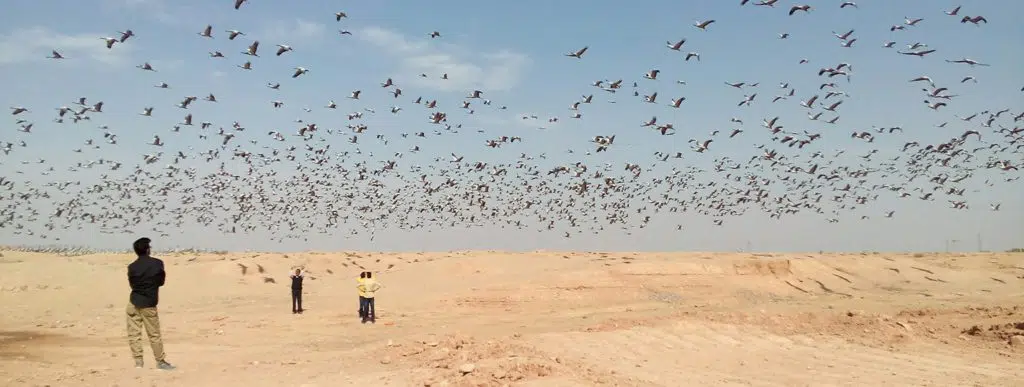By virtue of India’s tremendous diversity and depth of culture, many of its most exceptional experiences remain little known. For those with India on your bucket list, here are ten of this land’s innumerable treasures that richly deserve to be woven into your itineraries.

Hampi Temples
The sacred temples of Hampi are a major pilgrimage site of the Hindu religion. The ruins of this ancient city cover some 16 square miles, comprised of sacred complexes, forts, temples, shrines and water structures. Once the world’s second-largest medieval city, Hampi was never on the beaten path of the tourist circuit. But now with an airport about 50 km away it’s a lot more accessible and well worth the journey. This UNESCO World Heritage Site is a stunning example of 14th century Indian architecture and artistry. The settlement dates back to 1 AD, with structures of immense size bearing intricate carvings—truly a wonder to behold.
Metal Mirror Making
In Aranmula, a village in Kerala, the metallurgical traditions of the region persist through one extended family handmaking metal-alloy mirrors, the exact composition and creation of which is a family secret. Considered an auspicious item and used in traditional wedding ceremonies, these coveted mirrors are commonly replicated, but knockoffs do not compare to the real thing. The alloy is finely polished to produce its reflecting surface (with no back surface as with a glass mirror) eliminating blurs and secondary reflections.
Kalaripayattu
This Indian martial art originated in Kerala and is considered one of the oldest in existence. Also known as Kalari, which means “battlefield,” the practice was designed around ancient styles of fighting on the battlefield—with unarmed and armed techniques featuring weapons including swords, a three-bladed knife, axes, spears, and shields. The popular theory is that this art form of strengthening mind and body was carried by a Buddhist monk from India to China, and from there to the Okinawan Islands where it evolved into Karate.

Khichan Village
This Bishnoi village in the Thar Desert has become the winter home for tens of thousands of the graceful Demoiselle Cranes. All Bishnois follow the 29 (bis-noi) tenets laid down by the 15th-century guru Jambeshwar, affectionately known as “Jamba-ji.” They fervently believe in the sanctity of animal and plant life so wildlife finds a natural sanctuary around their villages. Half a century ago the villagers started laying out buckwheat to feed the birds and today it’s a prime spot for birders. This graceful crane species with a dancing display, ranges throughout central Eurosiberia. Traveling one of the most incredible migrations, they cross the Himalaya at altitudes as high as 26,000 feet to reach their summer grounds in Mongolia—another thrilling place to see them.
Glenburn Tea Estate
Nestled on a hill overlooking the Kanchenjunga mountain range in Darjeeling, this handsome tea plantation offers guests old-fashioned elegance and relaxation in which to share their blend of the region’s famous tea. The estate, owned and operated by one of India’s pioneering tea families, the Prakashes, offers an exemplary host of accommodations and spa treatments, in addition to their exquisites teas, which are seasonal and fresh, direct from the family gardens. The plantation is ideally situated for exploring the many trekking routes that abound in the Darjeeling and Sikkim region.
Kaziranga National Park
Majuli
The largest river island in the world, Majuli totals some 340 square miles on the middle of the Brahmaputra River in the state of Assam. The first river island to be made a district in India, its 144 villages are home to several ethnic groups, non-tribal communities and has 22 monasteries of Vaishwanites, where each perform a traditional but unique dance form dedicated to Lord Vishnu of the Hindu trinity. The island has been formed by the course changes of the river and its tributaries, and its wetlands of lush flora harbor many species of birds, making it a birding paradise.
Abhaneri Stepwells
Kailasha Temple
A chariot-shaped monument dedicated to Lord Shiva, the Kailasha temple is the largest single monolithic rock excavation in the world. Located in Cave 16 of the Ellora Caves—a rock-cut monastery-temple cave complex of more than 100 caves in the Aurangabad district of Maharashtra—the massive temple is carved of the rock cliff face, featuring monuments and sculptures depicting Hindu deities and intricate detailed carvings representing the home of Lord Shiva on top of Mt. Kailash. Apart from its size and sheer beauty, what is so incredible is that this temple has been created from a single mass of stone. It is believed to have taken 7000 laborers nearly 150 years to complete.

The Great Wall of Kumbhalgarh Fort
A UNESCO World Heritage Site as one of the spectacular Hill Forts of Rajasthan, the Kumbhalgarh fortress shields itself with the second-longest continuous wall, after only the Great Wall of China. Its colossal scale is astounding as its 22 miles of fortification tops westerly hills in the Aravalli range. There are five additional hill forts in Rajasthan (Chittorgarh, Sawai Madhopur, Jhalawar, Jaipur, and Jaisalmer) that incorporate similar architecture and were built between the 8th and 18th centuries. The defensive walls ensconced urban dwelling, bazaars, palaces and temples most of which have survived are are open to visitors.
Experience India
Travel with us on one of our India itineraries; India – Land of the Tiger, Quick Escape North India, Iconic India, to experience the excitement firsthand.

